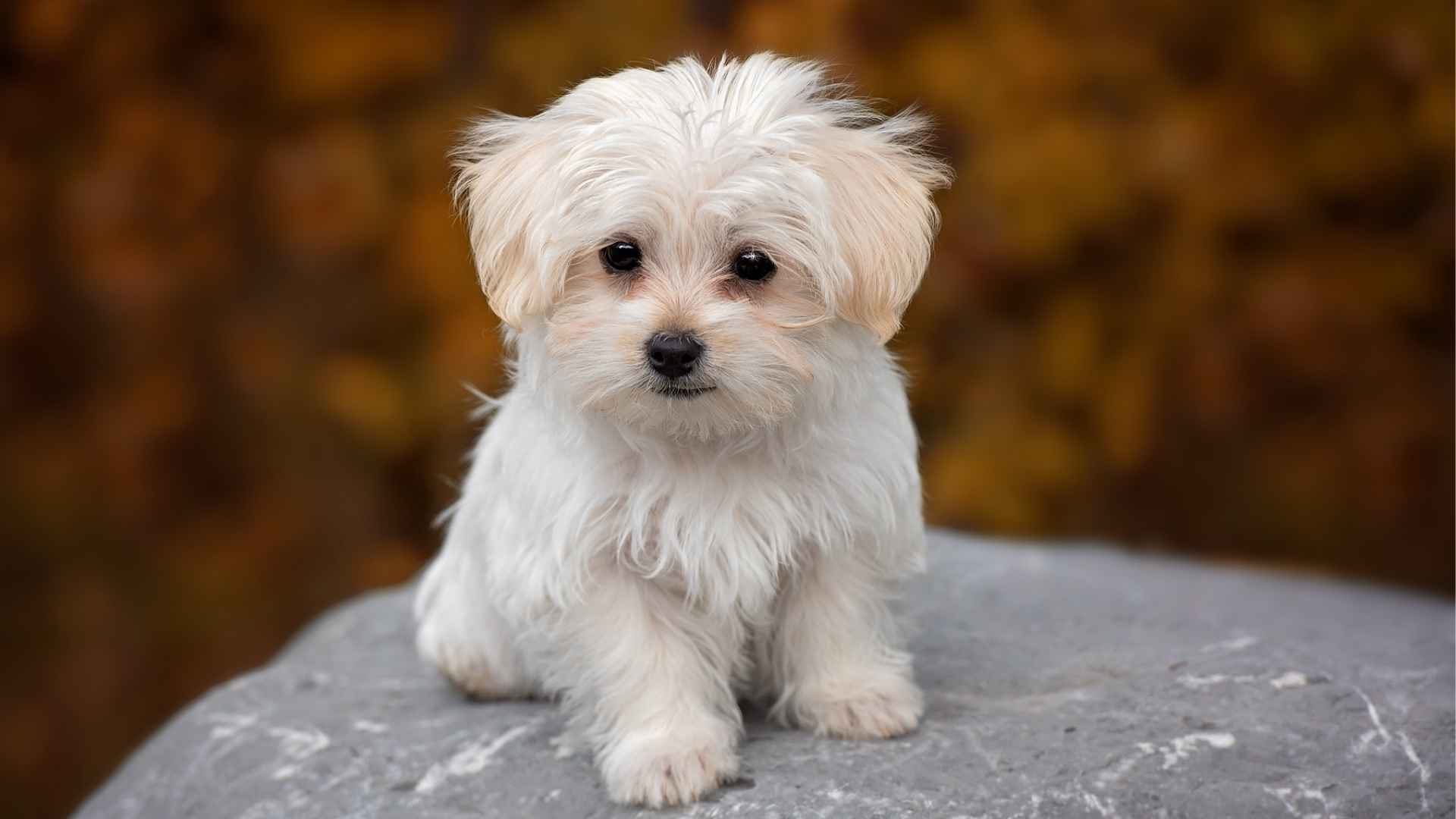In the diverse world of dogs, not all breeds exhibit the same level of dominance or assertiveness in their behavior. Low-dominance breeds stand out for their gentle, laid-back temperaments, making them ideal pets. These breeds are generally more cooperative and less likely to display dog aggression, which can often be a concern with certain dog breeds that tend to be more dominant.
The beauty of low-dominance dogs lies in their willingness to work with their human companions, making training easier and reducing the risk of undesirable behaviors. While different breeds have varying characteristics, those with lower dominance typically thrive in environments where they are given love, attention, and structure.
These dogs are less prone to challenging their owners and tend to form strong, positive bonds without the stress of managing aggressive tendencies, even during long periods apart. Read on to explore more about these low-dominance dogs that are excellent for families and multi-pet households.
Low Dominance Dog Breeds
1. Maltese
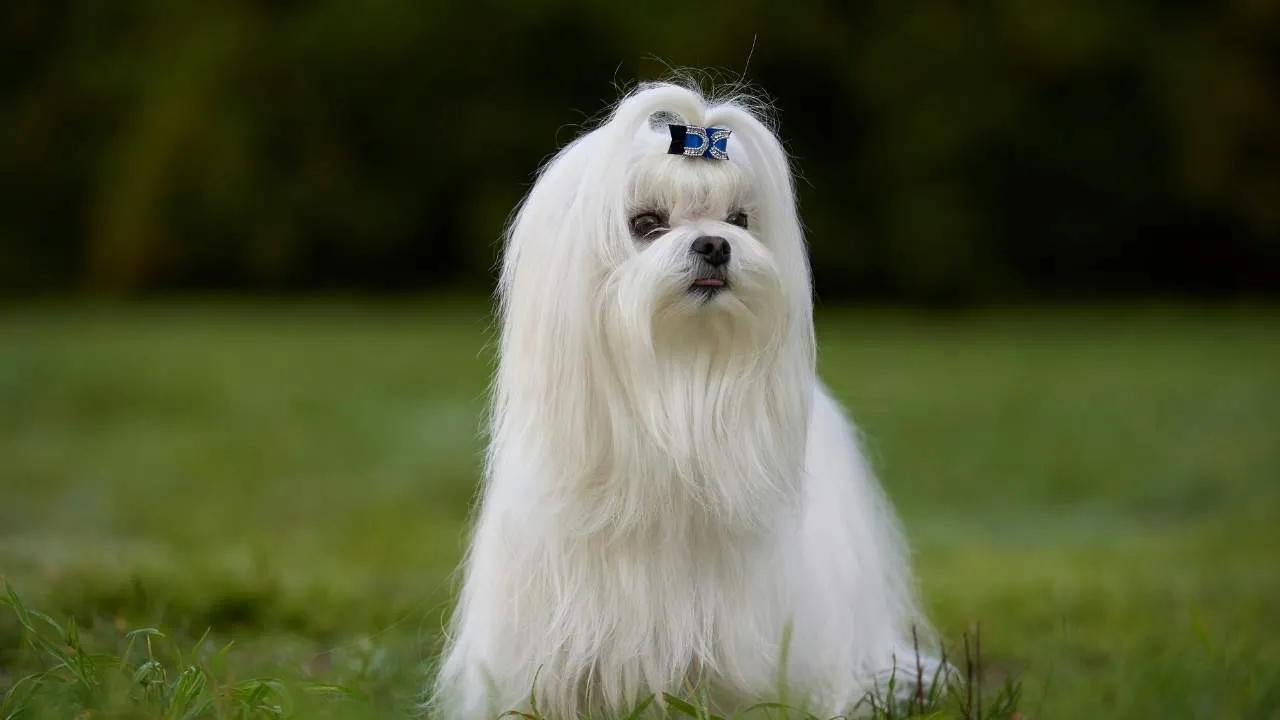
The Maltese is known for its gentle and non-assertive nature. Maltese seeks harmony with its human family and doesn’t challenge authority. Their easygoing temperament makes them ideal for first-time dog owners or families seeking a peaceful companion.
Historically, the Maltese were bred to be companions, and this peaceful trait is ingrained in their behavior. They are more focused on affection and bonding than on displaying any territorial instincts. Their natural inclination is to please, not to dominate, which makes them ideal for those seeking a calm and cooperative pet.
Training the Maltese is relatively easy, as they respond well to positive reinforcement. They thrive on praise and rewards, and their intelligent, eager-to-please nature means they rarely exhibit stubbornness. This breed doesn’t require harsh corrections, and they quickly understand and follow house rules.
As noted by Hillspet, Maltese also get along well with other pets without showing much jealousy or territorial behavior. Their calm temperament allows them to coexist peacefully with both other dogs and cats, making them a great choice for multi-pet households. They prioritize companionship over dominance, which helps create a stress-free environment.
Maltese embodies the low-dominance ideal—affectionate, adaptable, and cooperative. Their lack of assertiveness and desire for connection make them a perfect choice for anyone looking for a companion who is content to follow and not lead.
2. Japanese Chin
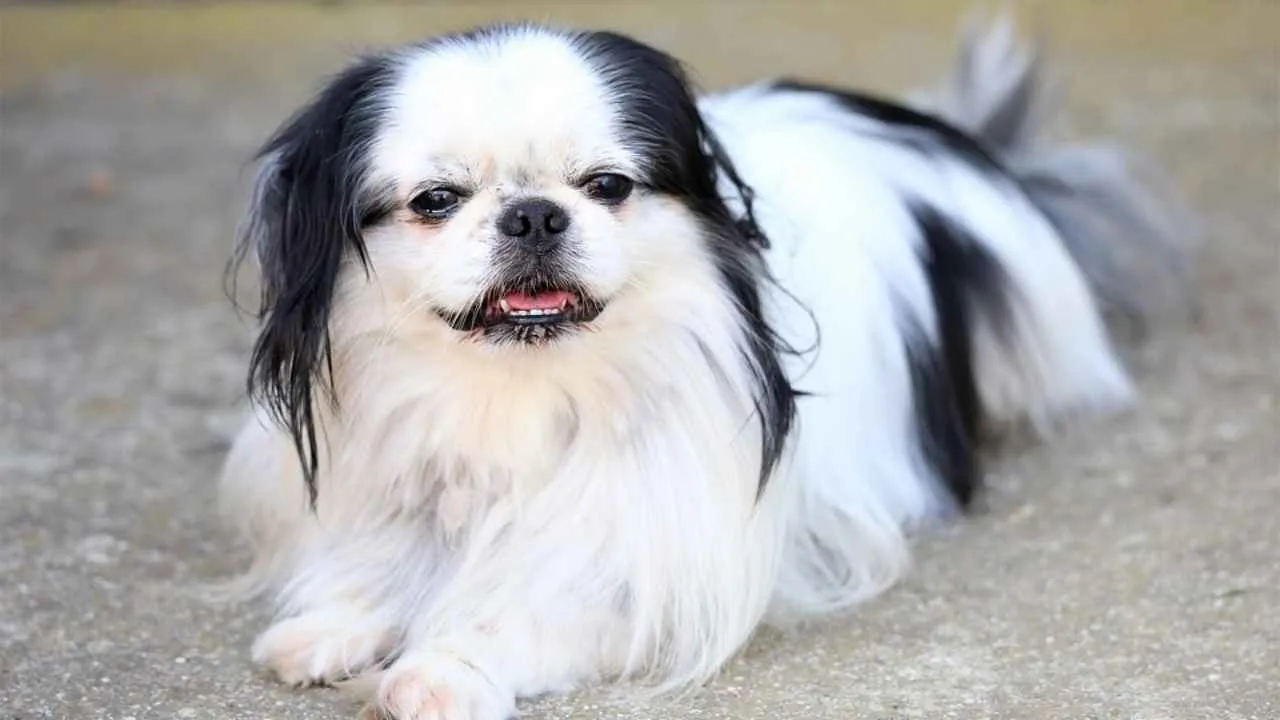
The Japanese Chin is a low-dominance breed known for its calm and gentle temperament. This small, affectionate breed thrives in relaxed environments and doesn’t require strong leadership. Its passive nature makes it an ideal pet for first-time dog owners or those seeking a dog with an easygoing attitude.
With a friendly and sociable disposition, the Japanese Chin enjoys forming strong bonds with their family. It is non-confrontational, getting along well with children and pets. Instead of asserting dominance, this breed is more likely to follow the lead of its owners, making it easy to integrate into a household.
Training a Japanese Chin is straightforward, as they are intelligent and eager to please. However, their independent streak means they may need patience and consistency. Positive reinforcement methods work best, and the breed responds well to treats and praise, although they may not always be as eager as more dominant dogs.
Despite their small size, Japanese Chins maintain an air of dignity and are generally not territorial or prone to excessive barking. Their calm demeanor makes them ideal for apartment living, as they adapt well to smaller spaces and remain composed in social situations with other dogs.
Health-wise, the Japanese Chin is a generally hardy breed, though regular vet checkups are necessary. They don’t require intense exercise, but daily walks and light play are essential to keeping them healthy and happy. With proper care, they can lead a long, healthy life.
3. Bernese Mountain Dog
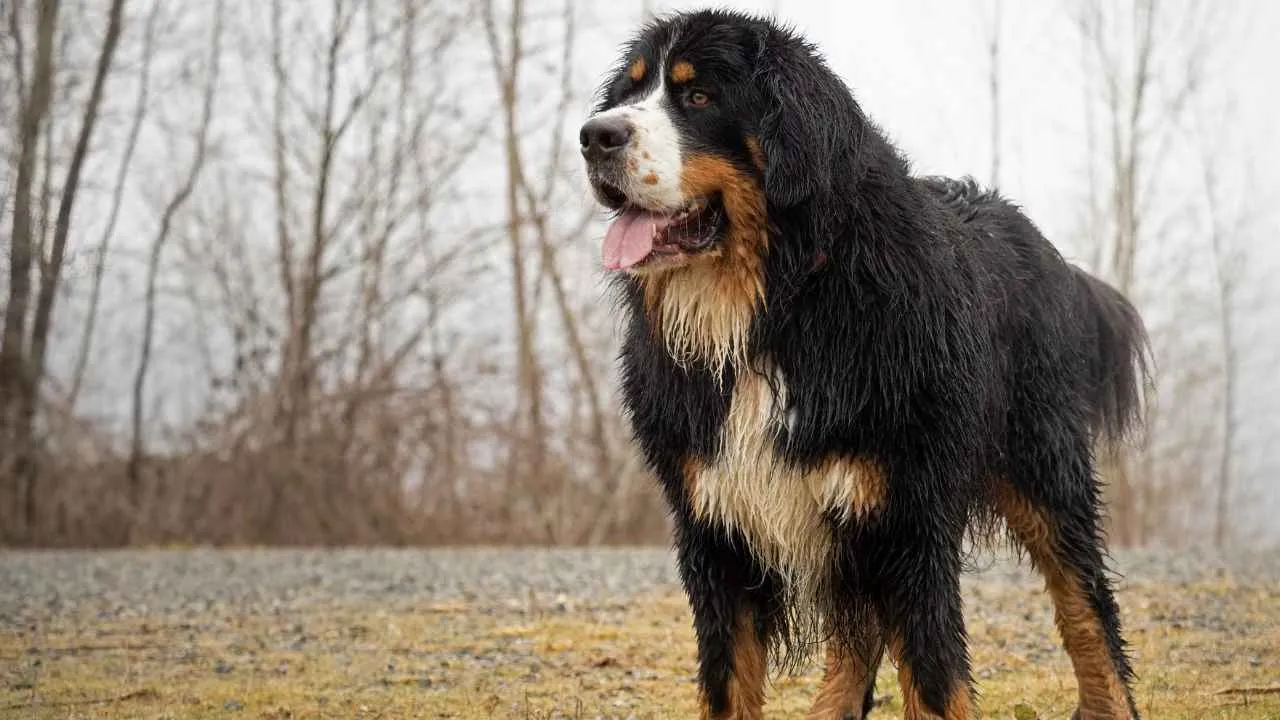
The Bernese Mountain Dog is a prime example of a low-dominance breed. While they are large, robust dogs, they are known for their calm and affectionate nature. They are not overly assertive and tend to follow their owners’ lead.
The Bernese Mountain Dog originated in the Swiss Alps, where it worked on farms, herding cattle and pulling carts. Bred for strength and loyalty, this breed thrived in the rugged alpine conditions.
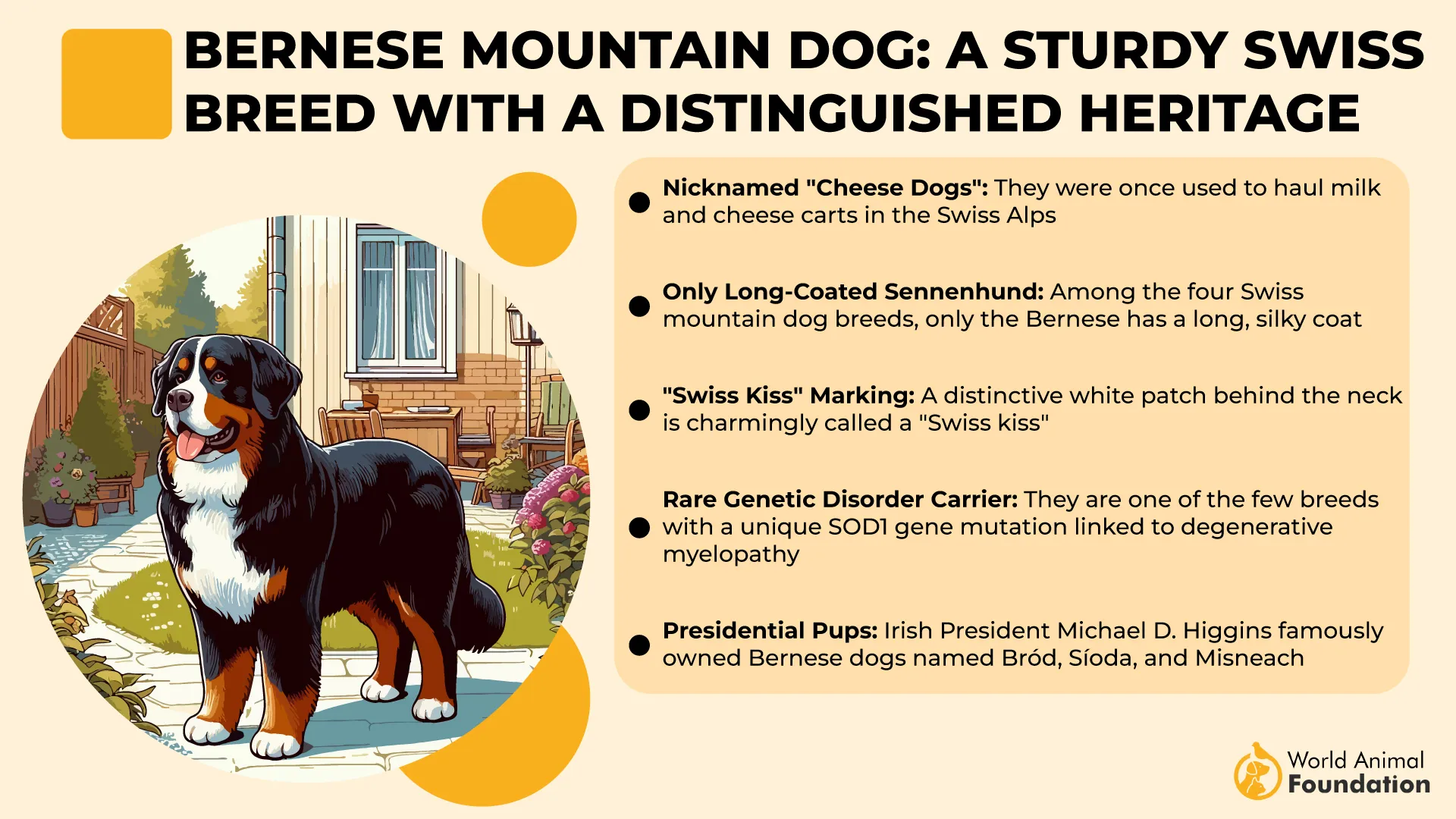
They also make easygoing companions who can co-exist peacefully with other pets and family members without vying for dominance. Their low dominance ensures they are generally well-mannered, making them a great choice for families or individuals who prefer a gentle dog.
With their soulful eyes and affectionate nature, Bernese Mountain Dogs are incredibly loving and bond deeply with their families. Their behavior tends to be more passive, and they rarely exhibit any signs of dominance. They are naturally friendly and open to forming strong relationships with those around them.
AKC states that Bernese Mountain Dogs are friendly and easy to train. Their low-dominance nature makes them less likely to challenge their owners, which makes training easier compared to more stubborn breeds. Regular walks and playtime are sufficient to keep them content, and they enjoy being part of family activities.
Their size and weight can put extra strain on their joints, which makes them prone to hip dysplasia. Thus, it’s important for owners to monitor their dog’s weight and activity levels to manage potential problems. Regular vet check-ups and careful management help mitigate some of the risks associated with these health concerns.
4. Newfoundland

The Newfoundland is a large, gentle breed known for its low-dominance nature. Their calm demeanor ensures they don’t vie for leadership, instead happily following the guidance of their owners. This non-dominant behavior makes them particularly well-suited for homes with children, where a laid-back, easygoing companion is preferred.
WebMD states that Newfies (as they are affectionately nicknamed) have a sweet temperament, and they are so good with kids that they are sometimes referred to as “nanny dogs.”
Newfoundlands are friendly and affectionate, and their behavior is calm rather than dominant. Despite being large dogs, they are not known for acting aggressively toward other dogs or people, which sets them apart from more territorial breeds.
Training a Newfoundland is a relatively easy process due to their gentle nature, cooperative behavior, and eagerness to please. They respond well to obedience training and can learn quickly when given proper training techniques.
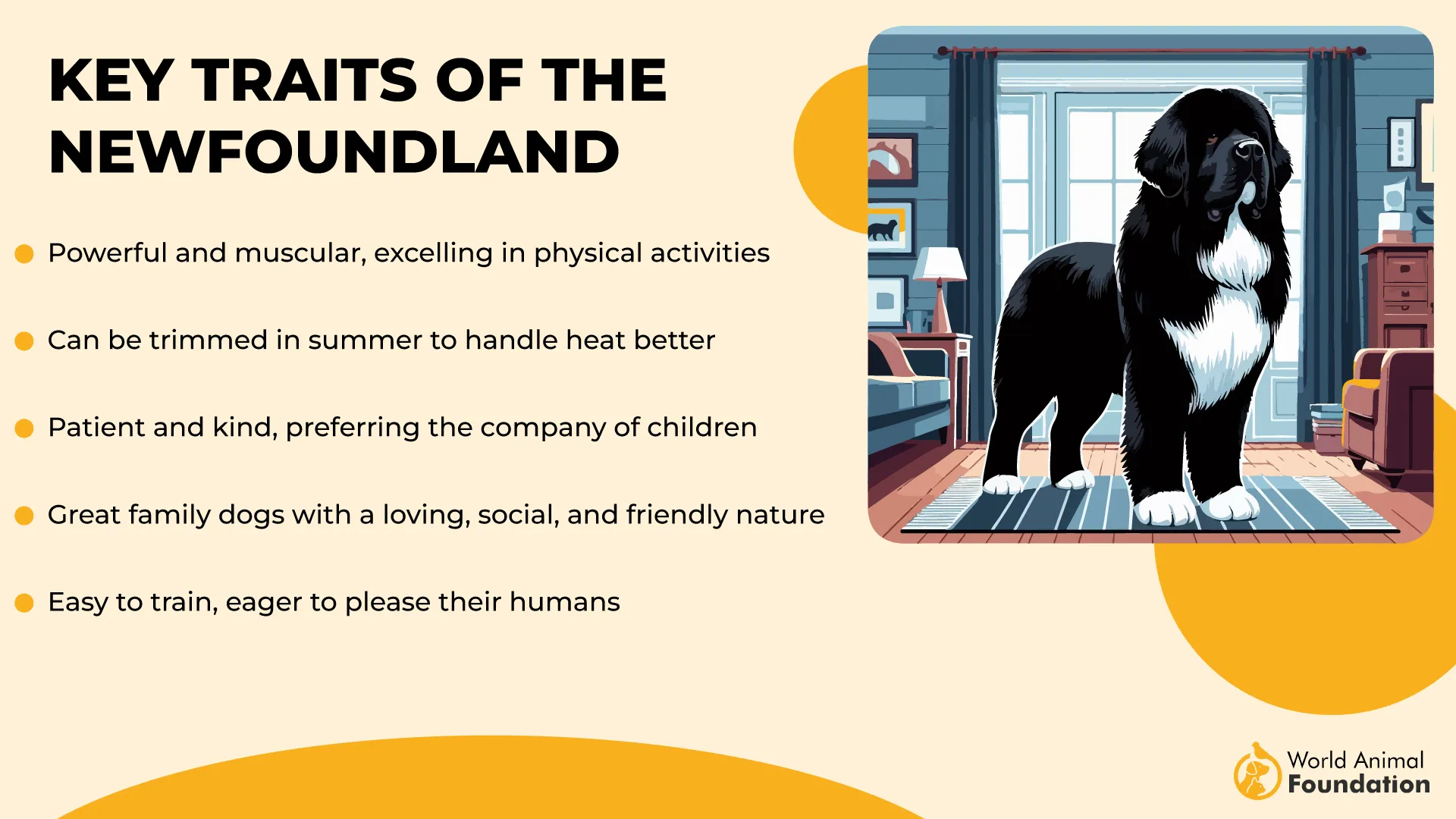
Their low dominance means they are less likely to display a stubborn streak or try to outmaneuver their owners, which can sometimes happen with more assertive breeds.
They are easygoing and more open to new experiences and interactions with people and other pets. When properly socialized, they are confident, friendly, and easy to get along with, making them ideal companions for families and those looking for a loyal, non-dominant dog.
5. Cavalier King Charles Spaniel

The Cavalier King Charles Spaniel is an ideal example of a low-dominance dog. Known for their sweet, gentle nature, they are typically free from aggressive behaviors, making them easygoing companions. Cavaliers are naturally well-behaved and content to follow their owners’ lead rather than assert control.
Their calm demeanor and affectionate personality make them highly adaptable, thriving in a variety of living situations. Their low-dominance nature means they rarely challenge authority, making them an excellent choice for pet owners seeking a peaceful, easy-to-manage dog.
PetMD states Cavalier King Charles Spaniels desire companionship and thrive on human interaction. This breed responds best to gentle, positive reinforcement, making training relatively straightforward. Their willingness to please and lack of a strong desire to dominate contribute to their reputation as one of the most affectionate and obedient small dogs.
With their easygoing temperament, they thrive on positive reinforcement and are quick to bond with their owners. Their willingness to please ensures they adapt well to consistent training, avoiding common behavior issues while remaining playful and loving.
With their low-dominance personality, Cavaliers are great for families, seniors, or first-time dog owners. They require moderate exercise, and while they enjoy mental stimulation, they are content without the intense physical activity demanded by more active breeds. Their sweet nature and lack of aggression make them a perfect fit for a relaxed, harmonious household.
6. Pug

The Pug is a friendly and affectionate breed known for its low-dominance nature, making it a great choice for pet owners looking for a relaxed companion. Pugs don’t exhibit dominant behaviors and are content to follow their owners’ lead. This makes them ideal for families and individuals seeking a gentle, non-aggressive dog.
With their distinctive wrinkled faces, large eyes, and compact size, Pugs are as lovable in behavior as they are in appearance. Their calm, laid-back demeanor ensures they don’t push boundaries, allowing them to easily coexist with family members and other pets without being overly assertive.
Pugs are well-suited for various living situations, especially apartment living. Their low-energy requirements mean they’re happy with short walks and plenty of relaxation. For prospective pet parents who prefer a dog that’s easy to manage, the Pug’s low-maintenance nature and gentle personality make it a perfect match.
Socialization is key for Pugs, but their naturally friendly and calm nature helps them interact well with people and animals. Their low dominance ensures they’re not likely to challenge other pets for leadership, making them great companions in multi-pet households when properly socialized.
Although generally healthy, Pugs can have breathing difficulties due to their brachycephalic face structure. Pet parents need to be aware of potential health issues and provide appropriate care. Despite these health concerns, Pugs are affectionate and easygoing, making them a wonderful addition to homes seeking a loving, low-maintenance dog.
7. Whippet

The Whippet, often referred to as a “poor man’s Greyhound,” has a rich history rooted in its original purpose as a hunting dog. Developed in England during the 19th century, they were bred to chase small game, such as rabbits and hares, at high speeds.
Their hunting background explains their high prey drive—an instinct that makes them exceptionally fast and agile, and quick to chase small animals.
Early socialization is especially crucial for Whippets due to their strong prey drive. While they are generally well-mannered and gentle with family members and other dogs, their instinct to chase other pets can pose challenges if not properly addressed.
At the same time, their high prey drive does not translate into aggression or dominance in daily life. Instead, Whippets prefer to quietly observe their surroundings and enjoy time with their families. This balance of high energy with low dominance allows Whippets to fit into various lifestyles as long as their need for occasional physical exercise is met.
Purina states that Whippets are highly trainable, but their independent nature requires a careful and consistent approach. They are intelligent dogs that respond well to positive reinforcement. Their intelligence and independent spirit mean that, while they learn quickly, they also thrive best in an environment where they are treated with respect and consistency rather than forceful training methods.
Whippets still have relatively high energy levels, especially when they have the opportunity to run or chase. They have consistent exercise needs, whether in the form of long walks or short bursts of sprinting.
Their reserved nature can make them prone to being timid or aloof around new people. Hence, exposure to various environments, people, and pets is key to ensuring they grow into well-rounded companions. With the right socialization, Whippets can be a loving and adaptable addition to any household, maintaining a gentle yet energetic personality.
Conclusion
When choosing a dog, it’s important to understand the unique traits each breed offers. Breeds like the Labrador Retriever and Golden Retriever are known for their friendly, non-aggressive nature. In contrast, others like Chow Chows and Basset Hounds may require training to prevent destructive behaviors.
Most dogs, including well-socialized breeds like the Bichon Frise and Irish Setter, thrive with proper exercise and mental stimulation, especially senior dogs that need extra care. Active dogs, such as the Great Dane, are ideal for those looking for a laid-back companion, but they still need firm guidance.
A combination of breed characteristics, environment, and training consistency shapes behavior in dogs. Certain breeds may take more time to train, but with patience, even the most stubborn pups can improve.
While some dogs may struggle in cold weather or have tendencies to be escape artists, understanding their needs helps prevent issues. Whether you’re adopting a puppy or a senior dog, socialization is key to promoting positive behavior and a strong, harmonious bond with your dog.


